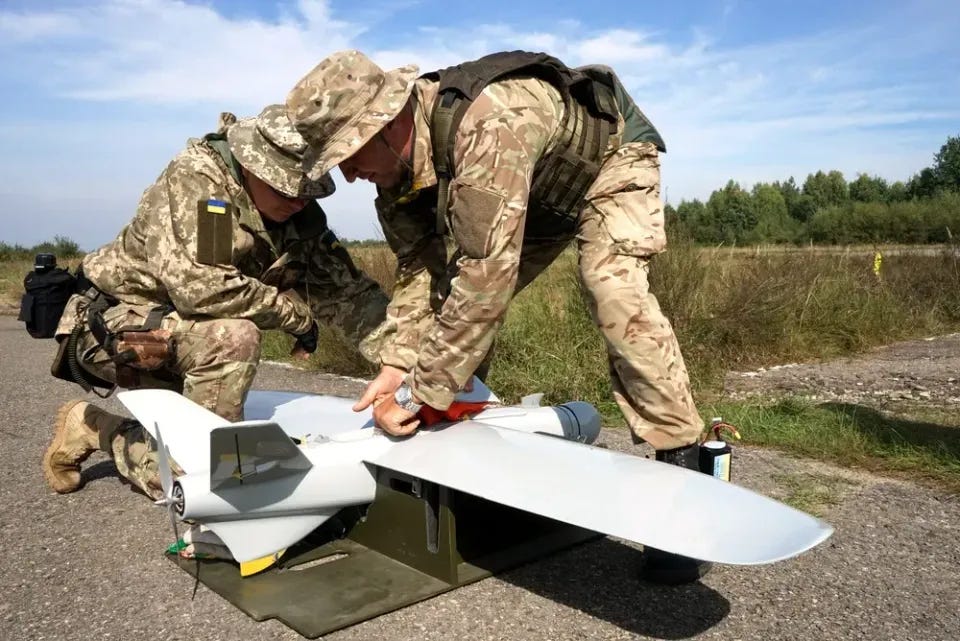Drone Swap Diplomacy: Kyiv Eyes UAV-for-Weapons Deal with Washington
What happened?
According to Parliament Speaker Stefanchuk, Ukraine is negotiating a "mega-deal" in which the United States would purchase Ukrainian-made drones in exchange for advanced weapons. Stefanchuk described the potential agreement as a "new page" that would establish Ukraine as a global security supplier. Industry officials expect the deal to focus on exporting the long-range UJ-26 Bober drone, which has a range of 621 miles (1,000 km) and costs approximately $110k per unit. It would also include the new DeepStrike models that Kyiv plans to mass-produce by 2025. Ukraine plans to produce 30,000 attack UAVs by that year.
Source: US Army National Guard photo by Spc. Amy Carle (Ukrainian soldiers with a drone)
Why does this matter?
Mutual leverage: Low-cost Ukrainian drones provide the Pentagon with an attritable swarm option, while Kyiv secures precision munitions that it cannot afford.
Industrial scale-up: Matching Russia's Shahed output requires contracts, operators, and AI upgrades in 15–20 day cycles, which Ukraine cannot currently achieve. Additionally, each strike drone requires a crew, and operator shortages are already impeding deployment.
Governance risk: Watchdogs warn that the procurement of drones has shifted to allies of Minister-turned-kingmaker Fedorov. Transparency is fading as friends of the government reportedly benefit from lucrative contracts while the public remains distracted by the war.
Macro squeeze: A projected $19 billion budget deficit in 2026 will limit Kyiv's ability to co-finance production. Meanwhile, the new PM, Svyrydenko, insists that fears of corruption are "exaggerated," revealing her misunderstanding of the importance of anti-corruption and structural reforms.
What's the counterpoint?
US officials have not formally expressed interest, and export-control hurdles and questions about battlefield reliability remain. Integrating Ukrainian AI-guided drones with NATO C2 and radar networks is challenging, and each shipment risks being seized by Russia. Some analysts argue that Washington could source similar systems domestically with fewer political restrictions.
finformant view
Kyiv's proposal is understandable: swap combat-tested drones, which Ukraine has in abundance, for air-defense interceptors and precision-guided munitions (PGMs), which Ukraine lacks. However, opaque contracting and a widening fiscal gap could undermine confidence before the first airframe is shipped. Tighter congressional scrutiny of Ukrainian procurement is urgently needed, or Ukraine may simply export new hardware alongside its entrenched corruption.



